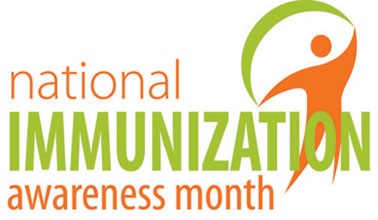


Vaccines are safe and effective. Because vaccines are given to millions of healthy people — including children — to prevent serious diseases, they’re held to very high safety standards.
In this section, you’ll learn more about vaccine safety — and get answers to common questions about vaccine side effects.
How are vaccines tested for safety?
Every licensed and recommended vaccine goes through years of safety testing including:
- Testing and evaluation of the vaccine before it’s licensed by the Food and Drug Administration (FDA) and recommended for use by the Centers for Disease Control and Prevention (CDC)
- Monitoring the vaccine’s safety after it is recommended for infants, children, or adults
Vaccines are tested before they’re recommended for use
Before a vaccine is ever recommended for use, it’s tested in labs. This process can take several years. FDA uses the information from these tests to decide whether to test the vaccine with people.
During a clinical trial, a vaccine is tested on people who volunteer to get vaccinated. Clinical trials start with 20 to 100 volunteers, but eventually include thousands of volunteers. These tests take several years and answer important questions like:
- Is the vaccine safe?
- What dose (amount) works best?
- How does the immune system react to it?
Throughout the process, FDA works closely with the company producing the vaccine to evaluate the vaccine’s safety and effectiveness. All safety concerns must be addressed before FDA licenses a vaccine.
Every batch of vaccines is tested for quality and safety
Once a vaccine is approved, it continues to be tested. The company that makes the vaccine tests batches to make sure the vaccine is:
- Potent (It works like it’s supposed to)
- Pure (Certain ingredients used during production have been removed)
- Sterile (It doesn’t have any outside germs)
FDA reviews the results of these tests and inspects the factories where the vaccine is made. This helps make sure the vaccines meet standards for both quality and safety.
Vaccines are monitored after they’re recommended to the public
Once a vaccine is licensed and recommended for use, FDA, CDC, and other federal agencies continue to monitor its safety.
Check out this infographic for details on how vaccines are developed, approved, and monitored.
There are many different parts of the national vaccine monitoring system
The United States has one of the most advanced systems in the world for tracking vaccine safety. Each of the systems below supplies a different type of data for researchers to analyze. Together, they help provide a full picture of vaccine safety.
- Vaccine Adverse Events Reporting System (VAERS): VAERS is an early warning system managed by CDC and FDA that is designed to find possible vaccine safety issues. Patients, health care professionals, vaccine companies, and others can use VAERS to report side effects that happen after a patient received a vaccine. Some side effects might be related to vaccination while others might be a coincidence (happen by chance). VAERS helps track unusual or unexpected patterns of reporting that could mean there’s a possible vaccine safety issue that needs further evaluation.
- The Vaccine Safety Datalink (VSD): VSD is a collaboration between CDC and several health care organizations across the nation. VSD uses databases of medical records to track vaccine safety and do research in large populations. By using medical records instead of self-reports, VSD can quickly study and compare data to find out if reported side effects are linked to a vaccine.
- Post-licensure Rapid Immunization Safety Monitoring System (PRISM): PRISM is part of the Sentinel Initiative, which is FDA’s national system for monitoring medical products after they’re licensed for use. PRISM focuses on vaccine safety — it uses a database of health insurance claims to identify and evaluate possible safety issues for licensed vaccines.
- Clinical Immunization Safety Assessment Project (CISA): CISA is a collaboration between CDC and a national network of vaccine safety experts from medical research centers. CISA does clinical vaccine safety research and — at the request of providers — evaluates complex cases of possible vaccine side effects in specific patients.
- Additional research and testing: The Department of Defense (DoD) and U.S. Department of Veterans Affairs (VA) have systems to monitor vaccine safety and do vaccine safety research. The National Institutes of Health (NIH) and the Office of Infectious Disease and HIV/AIDS Policy (OIDP) also support ongoing research on vaccines and vaccine safety.
